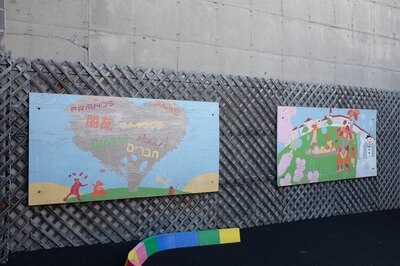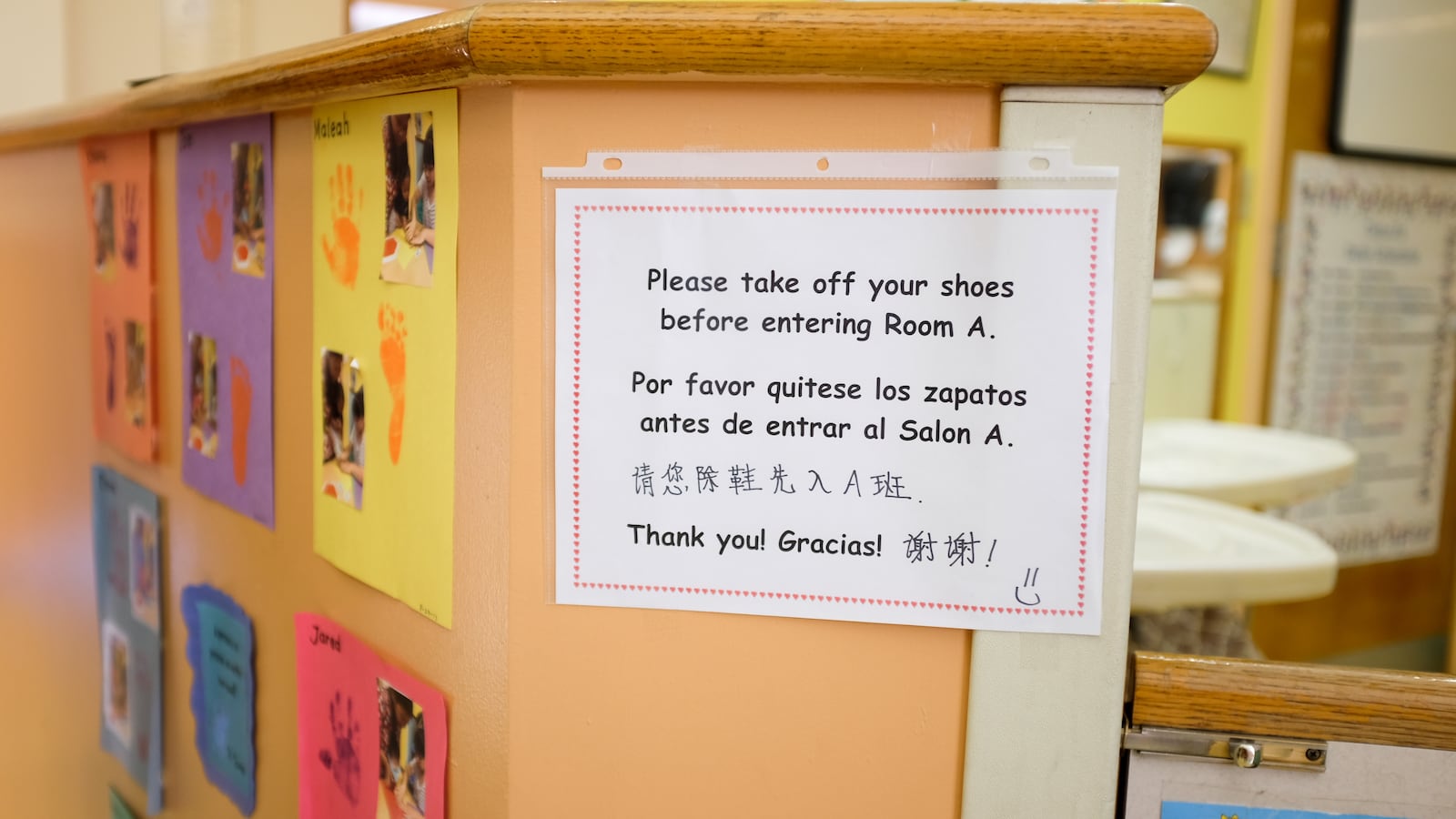When New York City reduced funding for the Magical Years child care center in 2012, staff there lobbied to gain back the seats they would have to cut.
Their effort fell short, so they turned to another funding stream: families in the neighborhood, Brooklyn’s Sunset Park, who were desperate for high-quality child care spots and who could pay for it.
Today, Magical Years is a vibrant space with toddlers singing songs in Spanish, Chinese, and English, and with a waitlist numbering in the hundreds. At any given time, nearly two thirds of infants and toddlers come through the city’s child care system, bringing in as much as $425 a week in city funding; the rest are from families that pay $250 a week for their spots.
In a city where early childhood programs are highly segregated by race and class, Magical Years suggests that the city’s recent early childhood overhaul might inadvertently have laid the groundwork for integration.
Families who might otherwise never brush elbows actively mingle and learn from one another At Magical Years, said Ann Goa, the center’s former director, adding, “We can see the connection and communication that parents have” with each other.
The changes at Magical Years represent an unintended consequence of a massive overhaul to how the city manages early childhood education, known as EarlyLearn. While there have never been many slots for infants in subsidized child care centers, the initiative reduced those spaces even more. The city started sending more children younger than 3 into less expensive programs run out of providers’ homes and paying some existing child care centers for fewer spots.
Like Magical Years, a handful of other centers in that position who were also in gentrifying neighborhoods responded by actively recruiting local paying families to help supplement the lost revenue. As a result, some, but not all, have created rare oases of integration — something that research suggests benefits poorer students and doesn’t harm other students.
Across the city, it’s unclear exactly how many paying families are sending children to child care centers that are otherwise city-funded. The city does not track this number, which is likely to be small because there are relatively few subsidized centers that serve infants, and many of those are in very high-poverty neighborhoods with few families able to pay for care.

But where this dynamic has played out, it has had an impact. At Magical Years, typically 14 of 42 seats are filled with paying customers, some of them employees at NYU Langone, the large health and social service organization that oversees Magical Years.
Magical Years places toddlers whose families pay privately in the same classrooms with children whose families are in EarlyLearn, paving the way for socioeconomic and racial integration.
But other centers funnel children from private-paying families into classrooms separate from their EarlyLearn classes.
At a Friends of Crown Heights center in the gentrifying Bedford-Stuyvesant neighborhood, for example, a handful of infant and toddler rooms are reserved primarily for “private pay” families. These rooms appear to be more racially diverse than other rooms in the center.
Center administrators — who operate 20 early childhood programs under a $42 million contract with the city — explain that the decision was largely driven by a desire to simplify bookkeeping. Different funding sources come with different regulations, they say, so it is easiest to group all children whose spots are paid in the same way together.
If a city representative wants to see the medical records of all the children in the EarlyLearn program, for instance, having those children in one classroom makes it easier for the center to comply, according to Hugh Hamilton, director of program development.
“It is for accounting purposes,” Hamilton said, adding that when the children at their centers play outside, staff at Friends of Crown Heights say, kids of all backgrounds come together.
To some researchers who study early childhood education, this approach is a mistake.
“Programs that are segregated by race/ethnicity and income are rarely, if ever, of equal quality,” write Jeanne Reid and Sharon Kagan of the National Center for Children and Families at Columbia University in their 2016 report, “A Better Start: Why Classroom Diversity Matters in Early Education.”
As the city takes an increasing interest in both early childhood education and integration, people who have experienced the wrenching changes that affected Magical Years are debating how spots for poor children should be handled.
Vaughan Toney, president of Friends of Crown Heights, says he’d like to see the city reinstate all of the subsidized infant slots lost during the EarlyLearn transition. Families with the means to pay privately, he says, have other options, while some low-income families that his organization serves have to travel to Friends of Crown Heights centers because their neighborhoods have no early childhood centers.
Kathleen Hopkins, vice president of NYU Langone’s community programs, has a different take. Though Magical Years’ private-pay slots reap far less revenue than the subsidized ones, Hopkins says the center wouldn’t want to switch those slots back to city-funded ones and risk losing the diversity that exists now.
“Families share strengths and assets and learn different cultural beliefs and value systems, and that just enriches the environment for the children,” she said.
Hopkins said she would rather see the center expand to make space for more of everything — more subsidized and more private slots. “Segregated centers are never a good thing,” she said.
This story is adapted from a forthcoming report by the Center for New York City Affairs at the New School that looks at subsidized infant and toddler child care.

